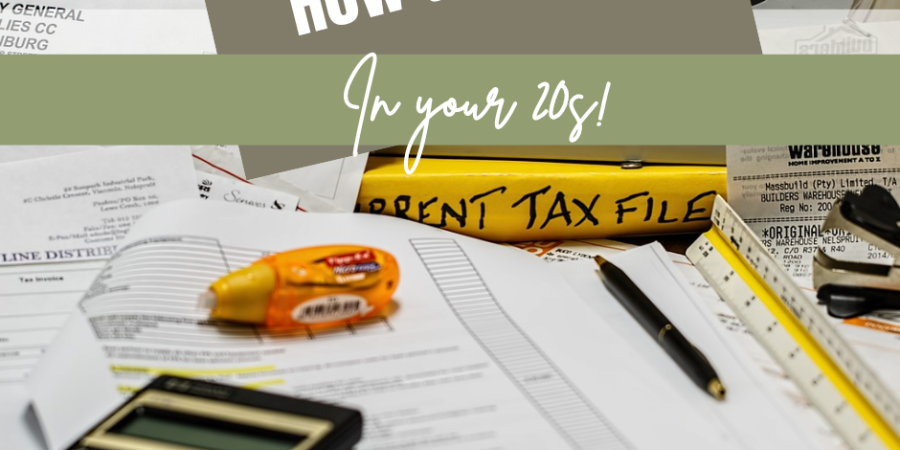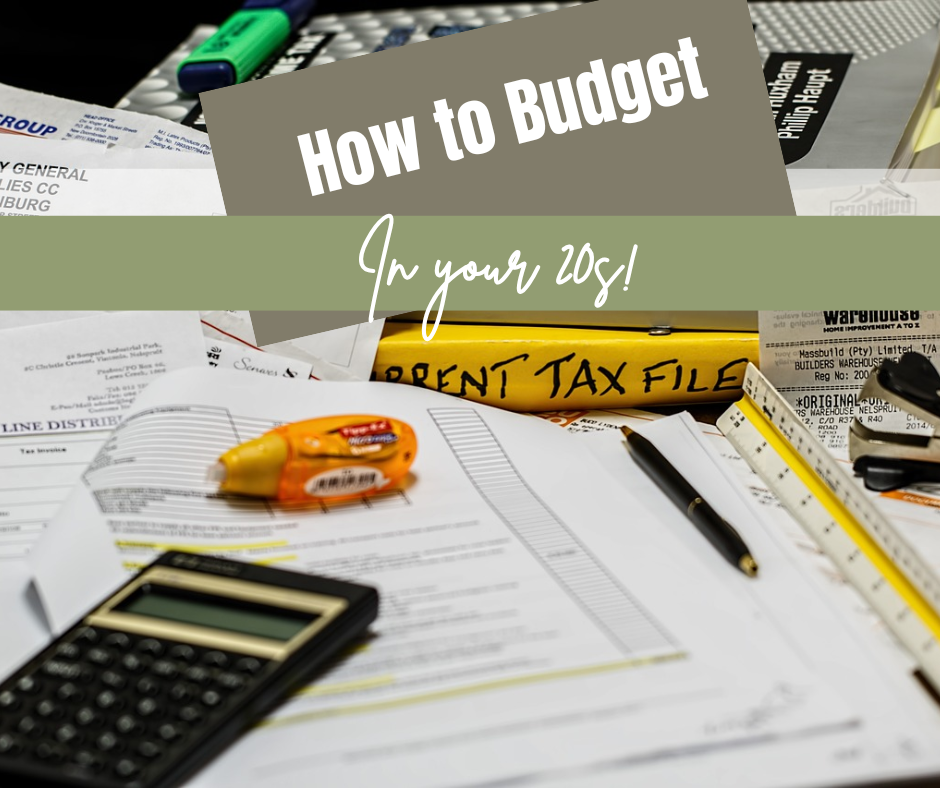How to Save Money in your 20s
When I first started working, I was overwhelmed with the freedom of being able to buy whatever I wanted. However, when real life set in and I started to have bills, unexpected things coming up, but more than that I had goals and things I wanted to accomplish. Sitting down and looking at what I had coming in versus going out, and making decisions allowed me to take control of my life. I was able to see and decide what was truly important.
What is a budget?
A budget is simply tracking how much money you have coming in, usually on a monthly basis, then tracking your bills and other essential expenses. Once you see what you absolutely have to pay, then you can see what you have leftover and determining where that should go, such as savings, an emergency fund or short term and long-term goals.
Budgeting Strategies for Young Adults
There are many different budgeting strategies, even some methods that can be mixed and matched, but it’s important to find one that works for you. You can use an app, spreadsheet, write it down day by day or use an envelope method.
Separate Needs from Wants
Before you start any budget, make sure you’ve separated your expenses into needs vs. wants.
Needs are the basics that you must have in order to live: shelter, food, transportation. Wants are the things that you’d like, but can live without. Sometimes it can be hard to tell the difference, but as you hone your budgeting skills, you’ll get the hang of it. Ask yourself, before you spend, “Is this necessary for me to get through my day-to-day life?”
Once I figured out what my needs were and found the cheapest options for the needs like car insurance, etc. I tried to set up automatic payments for any bills I could, especially for payments that stayed the same month after month such as rent, car payments, and insurance. I also set up an automatic savings account that took out an estimated 10 percent of my paycheck every two weeks.
When you set up these automatic payments, make sure you have it also set on the calendar so you can make sure the amount you need is your account on those days.
Here are some different budgeting strategies to consider:
Zero-Based Budget
This means that every penny of your income is accounted for and anything leftover at the end of your bills such be put into some kind of savings, retirement account, emergency account or for paying off debt.
Pay Yourself First
With the pay-yourself-first method, you make retirement and emergency fund or other savings accounts a priority. The money targeted for those goes into their accounts first, before you do anything else. What’s left over is what you use to pay bills and other expenses. This is the budget I initially started with, so I could make sure I save some money first and live below my means.
The Envelope System Budget
Initially, this method meant putting cash into envelopes designated for separate expenses, like utilities or groceries, after you cashed your paycheck. When I struggle with more flexible part of my budget like groceries, eating out, entertainment, this is my go-to budget. It’s always easy to see how much cash I have left for the month and determine if that extra latte is something I want now or later.
The 50/30/20 Budget
A proven method of budgeting is to allocate 50 percent of income to needs, such as rent, car payments, gas, insurance, etc. 30 percent to wants such as eating out, entertainment, clothes, and 20 percent to savings. This is the ideal the ratio, however if your rent is 50 percent of your income, and you still have to buy groceries, gas, and pay for utilities, you may have to reduce other expenses to make it work.
Set Short-Term and Long-Term goals
Anytime you’re trying to implement change in spending habits, it’s important to have a goal or reason why you’re doing it. Even achievable short term goals can help us stay focused and give something for us to aim for.
Short term goals might include buying a car, having initial costs for an apartment, or using cash instead of credit to buy a new phone.
It’s not just about saving money, but creating structure and stability to make your short term goals possible. Once you knock out some of your short term goals, you can also work on some long term goals, such as buying a house, saving for retirement or starting a family.
Manage Major Expenses
Major expenses include things like shelter and transportation. A vision of what type of place you want to live in or car you want to drive might have to be in the long term goal category, until it’s something you can afford. Getting evicted, a foreclosure, or a car repossession has a negative impact on your finances that lasts years.
It’s important to look at your finances and research upfront you can afford. And it’s not just about one factor, but taking into account other what it will take to maintain that purchase. For instance, when considering your rent, also consider utilities, wi-fi, or even increased transportation costs from your new location to work or the store. When you buy a car, also consider insurance costs, fuel-efficiency and maintenance costs.
When living with your parents or with roommates, start practicing habits with budgeting and different financial responsibilities. This will help down the road, have a realistic expectations of paying bills and managing expenses.
Budgeting Guide for Young Adults
Single Person Budget Example
According to this article on SoFi, the average monthly expenses for one person can vary, but the average single person spends about $4,641 per month.
• Housing tends to consume the highest portion of monthly income. The average cost for one person coming in at about $1,684 per month.
• The average single person spends around $756 per month on transportation.
• Individuals spend an average of $367 per month on health care. They may spend much more if they’re not covered by an employer-plan.
• Food expenses can run around $572 per month for a single person.
With these expenses, the average person would need to make around $59k per year.
Sample Budget for 50k Salary
To maintain these expenses, the average person would need to make $59k per year, however in the US, according to ZipRecruiter, the average single person makes $63k per year. It was difficult to find a realistic budget based on the average rent even in Oklahoma, which has some of the cheapest housing options in the U.S. Most of the budgets I found an example of $1,000 per month, which would be difficult or impossible in most cases for a person without a roommate. Although the 50/30/20 budget recommends you don’t spend more than $1,250 on rent. This girl in LA, has a take home of $3,175. See how her budget works with $55k when sharing housing expenses with a roommate.
A Budgeting Guide for Young Adults
As a young adult, setting up your budget is no easy feat. However, as you develop healthy financial habits, it will snowball into a better future than you could imagine. It’s never too late to start developing better financial habits or work toward goals that will stabilize your life in the long run. Don’t let this process intimidate you, just start small!
Don’t forget to pin this information for later!


